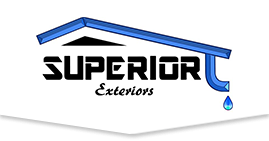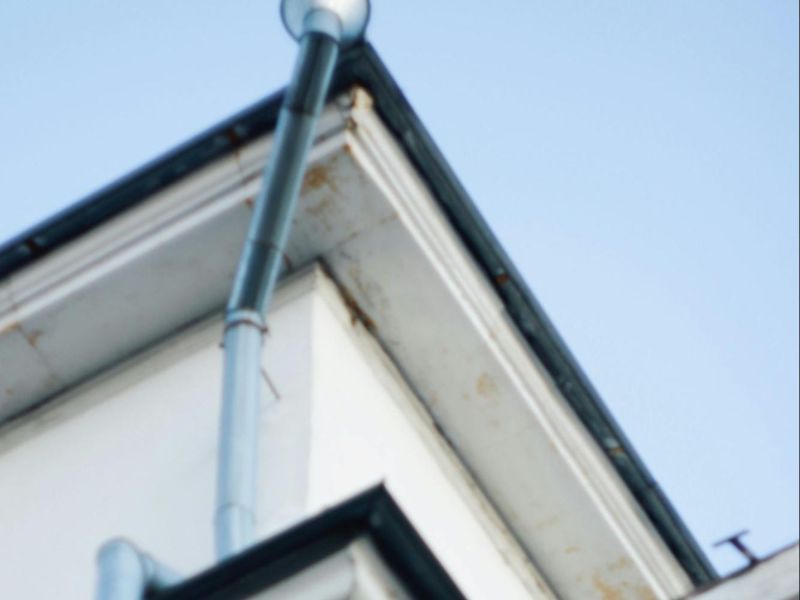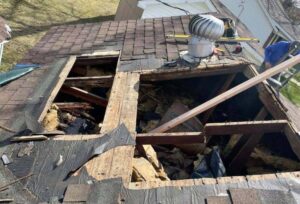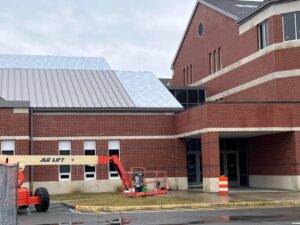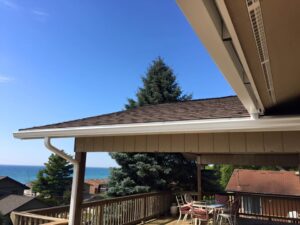Gutter installation is a crucial aspect of maintaining a home’s integrity and protecting it from water damage. When done correctly, gutters efficiently channel rainwater away from the roof and foundation, preventing issues such as erosion, flooding, and structural damage. However, improper installation can lead to a host of problems, compromising the effectiveness of the gutter system and potentially causing costly repairs down the line. In this article, we’ll explore expert insights into common mistakes to avoid in gutter installation, empowering homeowners and contractors alike to ensure a successful and long-lasting gutter system.
-
Improper Pitch and Slope
One of the most common mistakes in gutter installation is inadequate pitch or slope. Gutters must be installed with a slight downward slope towards the downspouts to facilitate proper drainage. A pitch of at least 1/4 inch per 10 feet of gutter length is recommended to ensure water flows smoothly and efficiently. Without the proper slope, water may pool and stagnate, leading to overflow, debris buildup, and potential damage to the gutter system and the home’s foundation.
Solution: Before installing gutters, carefully measure and mark the desired slope along the fascia board. Use a level to ensure consistent pitch across the entire length of the gutter system. Adjust as necessary to achieve the optimal slope for efficient water drainage.
-
Inadequate Downspout Placement
Another common mistake is improper placement or insufficient number of downspouts. Downspouts play a crucial role in directing water away from the foundation and preventing pooling around the base of the home. Inadequate downspouts or poorly positioned ones can result in overflow, water damage, and erosion near the foundation.
Solution: Install downspouts at regular intervals along the gutter system, with a maximum spacing of 30-40 feet. Position downspouts near corners, valleys, and areas of concentrated water flow to ensure optimal drainage. Consider adding additional downspouts for larger roof areas or areas prone to heavy rainfall.
-
Incorrect Gutter Size
Choosing the wrong gutter size is a common mistake that can significantly impact the effectiveness of the gutter system. Our friends at Gutter-Guys explain how gutters that are too small may not be able to handle the volume of water runoff from the roof, which can lead to overflow and water damage. Conversely, oversized gutters may be unsightly and inefficient, as they can collect debris and stagnant water.
Solution: Determine the appropriate gutter size based on the roof area, pitch, and average rainfall intensity in your region. Consult with a professional gutter installer or use sizing charts provided by manufacturers to select the right gutter size for your home. Additionally, consider the capacity of the downspouts to ensure proper water flow and drainage.
-
Poorly Secured Gutters
Improperly secured gutters are prone to sagging, pulling away from the fascia board, and eventually detaching from the home altogether. This can result in water overflow, damage to the gutter system, and potential structural damage to the roof and foundation.
Solution: Use durable gutter hangers or brackets to secure the gutters to the fascia board at regular intervals, typically every 24-36 inches. Ensure that hangers are securely fastened to the fascia board and that gutters are properly aligned and level. Additionally, consider reinforcing gutter joints and seams with sealant or rivets to prevent leaks and separation.
-
Neglecting Proper Maintenance
Even a well-installed gutter system requires regular maintenance to ensure optimal performance and longevity. Neglecting maintenance tasks such as gutter cleaning, debris removal, and inspections can lead to clogs, blockages, and eventual failure of the gutter system.
Solution: Establish a regular maintenance schedule for gutter cleaning and inspection, especially before the rainy season or after severe weather events. Remove leaves, twigs, and debris from the gutters and downspouts using a gutter scoop, brush, or pressure washer. Inspect for signs of damage, leaks, or corrosion, and repair or replace damaged components as needed.
Conclusion
Avoiding common mistakes in gutter installation is essential for maintaining a functional and effective gutter system that protects your home from water damage. By ensuring proper pitch and slope, adequate downspout placement, correct gutter sizing, secure attachment, and regular maintenance, homeowners can safeguard their investment and enjoy peace of mind knowing their home is well-protected against the elements. Whether DIY-ing or hiring a professional, attention to detail and adherence to best practices are key to successful gutter installation and long-term performance.
